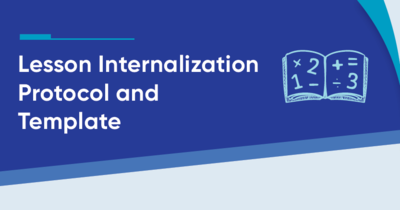
Mathematics, High-Quality Instructional Materials
Give in celebration of DFI's 10th anniversary
Help us reach more teachers and students over the next 10 years




A collaborative of ed-prep programs working together to make instructional effectiveness a priority for new teachers

Leveraging HQIM to improve instructional effectiveness in the first year of teaching
Ask any teacher, the first year is hard. Strong preparation experiences can support new teachers in lightening the cognitive load and developing their ability to prioritize. The Tennessee High-Quality Instructional Materials (HQIM) network was a collaborative of four programs working together to make instructional effectiveness a priority for new teachers, lighten their load in the first year, and increase the likelihood that every student has access to grade-level learning.




Through a partnership with the Tennessee Department of Education, DFI facilitated this network, which included:
Our network approach brought together programs across the state that represent different institutional contexts–from traditional undergraduate, to residency programs, to Grow Your Own. This fostered more expansive thinking around how teachers could reach all students. Collectively, these four programs graduate about 20% of new teachers in Tennessee annually.

Guided by principles of learning science, we developed an original assessment and tracked teacher-candidate understanding before and after completing training. Teacher-candidates had to analyze a series of instructional vignettes to determine which choice a teacher should make as they identified materials, prepared to teach a lesson, or interacted with students.

We created and implemented four modules that prepare future teachers to evaluate whether materials are high-quality, use them to deliver consistent, standards-aligned instruction, and explain why they’re important in fostering rigorous and supportive learning environments. Check out our HQIM instructional modules overview for more information.


"I never thought about truly sitting down and going over problems: 'This is how I could solve it, but also this other way.' As a student, you don't realize what goes into solving problems. Being in the teacher position, there's so much more: 'I've gotta know this but also be prepared for this.' I never realized that until I did these modules."
Hayley Waller, teacher-candidate

Note: The differences in pre/post distributions are statistically significant at the 95% confidence level.
Our HQIM pre- and post-assessments of teacher-candidates produced the following takeaways:
**Indicates significance at 95% confidence level.
The past decade has produced a dramatic shift in K-12 schools, as more and more districts adopt HQIM. Centering these materials in teacher preparation more closely aligns preparation with the realities of K-12 classrooms.

“I’ve been here 10 years, and the focus has been on creating things yourself. When I’m out in schools, mentor teachers say there’s a shift. There are better curriculums available. We’ve tried to focus in on that: ‘What are you looking for? What makes this high cognitive demand versus low?’ The HQIM [modules] put a process to it. I love the templates students are having to use, and the process of, ‘Let’s look at the questioning and the assessments, and prioritize where time is going to be spent.’”
Jennifer Meadows, Associate Professor, Tennessee Tech University
Using HQIM is not about reading from a script. Skilled teachers engage in deep intellectual preparation to internalize the complex content and be ready to support their students with rich instructional tasks.
For example, teacher-candidate Alison Richards discusses what she learned from analyzing an instructional task to prepare a think-aloud: “Learning about think-alouds wasn’t something I had ever been introduced to until these modules. That idea of me showing students how I think when doing a task, I can see a lot of value in that. Because sometimes, students don’t know where to start. By giving an example, by thinking out your own thought process, it helps students find their own first words, or that opening hook, or how to annotate in a way that will give them the knowledge they need.”
Students don’t get to choose whether they have a novice or veteran teacher, and research consistently shows that students furthest from opportunity are more likely to be in the classroom of a novice. Preparing future teachers to use HQIM increases the likelihood that their students will have access to rigorous, grade-level instruction. Additionally, HQIM help to lighten the planning load for new teachers, enabling them to focus on building relationships with students and families and think deeply about how they’re reaching and engaging every student.
Sign up for our newsletter and follow us on social media to get the latest news.